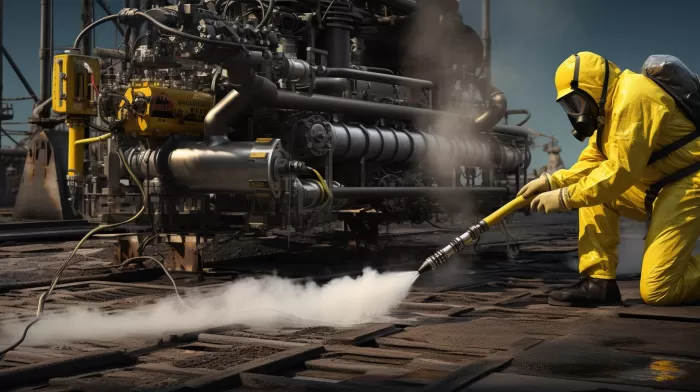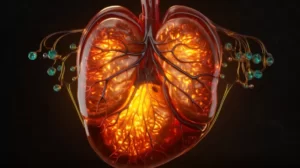Researchers have discovered that chemicals used for hydraulic fracturing, or fracking, can interfere with the body’s reproductive hormones, glucocorticoid and thyroid hormone receptors. All of these are essential for healthy body functioning. Researcher Christopher Kassotis of the University of Missouri, Columbia, states: “Among the chemicals that the fracking industry has reported using most often, all 24 that we have tested block the activity of one or more important hormone receptors.” Consequences of this hormone disruption by endocrine-disrupting chemicals (EDCs) can be infertility, cancer, and birth defects.
Hydraulic fracturing consists of injecting chemicals and millions of gallons of water deep underground under high pressure. This process fractures underground rock and releases trapped natural gas and oil. However, spills of wastewater from this process can lead to the contamination of surface water and groundwater.
Fracking Spill Sites Can Have High Levels of EDC Activity
Research has shown that water at fracking spill sites, such as Garfield County, Colorado, contains moderate to high levels of EDC activity that mimics and obstructs the functions of female (estrogen) and male (androgen) hormones in human cells. On the contrary, water that has been analyzed far from gas-drilling sites displayed only minimal EDC activity.
Though Kassotis states that scientists have not measured the concentration of these chemicals in local water samples, the high levels of chemicals tested may not be found in drinking water near drilling sites. However, he warns that the mix of these chemicals acting together could create hormone-disrupting effects worse than those caused by individual chemicals acting alone.
Potential Adverse Health Consequences
Kassotis acknowledges that the potential adverse health consequences of human and animal exposure to these chemicals are still unknown. However, infants and children would be most vulnerable to these effects due to their smaller size and infants’ inability to break down these chemicals.
In a study of 24 common fracking chemicals tested for EDC activity in human cells, 20 were found to block the estrogen receptor, preventing estrogen from binding to the receptor and producing a natural biological response. Additionally, 17 chemicals interfered with the androgen receptor, 10 slowed the progesterone receptor, 10 obstructed the glucocorticoid receptor, and 7 inhibited the thyroid hormone receptor.
What You Can Do
To minimize your risk of exposure to these harmful chemicals in water, consider investing in a high-quality water filtration system for your home. Some systems specifically designed to filter out EDCs can be found in the market today. More information about removing such harmful substances from your water supply can be found on the Environmental Working Group’s website.
Pay attention to local news and regulations around fracking, especially in regions where hydraulic fracturing is expanding. Support regulations that protect water sources, the environment, and public health by engaging with decision-makers in your community. This includes attending public forum discussions on the topic, contacting your local legislators, and joining local environmental advocacy groups.
Maintain a healthy lifestyle to minimize the risks associated with exposure to hormone-disrupting chemicals. Adopting healthy habits such as exercising regularly, eating a balanced diet, avoiding processed foods, and getting enough sleep can help your body better cope with any external stressors.
In conclusion, hydraulic fracturing is becoming a more widely practiced method of natural resource extraction. Its widespread use means that more people may potentially be exposed to hormone-disrupting chemicals that can cause an array of health problems. By staying informed and proactive in protecting both your family and the environment, you can minimize your risk of thyroid problems and other health issues related to EDC exposure due to hydraulic fracturing.



![8 Simple Rules to Refresh Your Body with a Healthy Cleanse [See Pictures]](https://naturalhealthreserve.com/wp-content/uploads/2024/01/8-rules-healthy-cleanse-slideshow-300x168.webp)